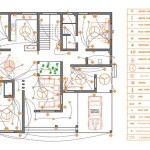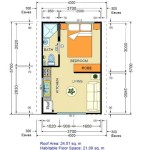How To Plan A House Party
Planning a successful house party requires careful consideration of several key factors. From setting a budget and choosing a theme to managing the guest list and ensuring everyone's safety, each element contributes to the overall experience.
Setting the Foundation: Budget, Date, and Theme
Establishing a realistic budget is crucial. One should consider expenses such as food, beverages, decorations, and entertainment. Creating a spreadsheet can help track these costs effectively. Once a budget is established, selecting a date and time is the next step. Considering factors like holidays, weekdays versus weekends, and potential conflicts for guests can contribute to better attendance. A theme can add a unique element to the party, encouraging guests to engage and interact. Themes can range from simple dress codes (e.g., casual, semi-formal) to more elaborate concepts (e.g., decades, holidays, movies).
Crafting the Guest List and Sending Invitations
The guest list should align with the party's theme and the capacity of the venue. It's important to consider the dynamics of the group and ensure a comfortable atmosphere for all attendees. Once the guest list is finalized, invitations should be sent out well in advance. Invitations can be digital or physical, depending on the formality of the party and the preferences of the host. Clear communication of the date, time, location, dress code (if any), and RSVP information is essential.
Planning the Menu and Beverages
The food and beverages should cater to the preferences of the guests and the theme of the party. A variety of options, including vegetarian, vegan, and allergy-friendly choices, ensures inclusivity. One can choose to prepare food independently, hire a caterer, or ask guests to contribute potluck-style. Drinks should also offer variety, including alcoholic and non-alcoholic options. Having enough ice and appropriate glassware is essential for serving beverages effectively.
Setting the Ambiance: Decorations and Music
Decorations can significantly enhance the atmosphere of the party. They can be as simple as balloons and streamers or as elaborate as themed props and backdrops. Lighting plays a vital role in creating the desired mood. Dim lighting can foster a relaxed atmosphere, while brighter lights can energize the space. Music selection is equally important. Creating playlists appropriate for the theme and the energy level of the party can keep guests entertained throughout the event. Consider using a streaming service or hiring a DJ, depending on the budget and the scale of the party.
Ensuring Guest Comfort and Safety
Creating a comfortable and safe environment for guests is paramount. Ensure adequate seating arrangements are available, particularly for larger groups. Having designated areas for coats, bags, and other belongings can prevent clutter and maintain order. Clearly marking restrooms and ensuring they are well-stocked with essentials contributes to guest comfort. Safety measures should also be considered, such as having a well-lit pathway to the entrance, ensuring adequate ventilation, and having a designated driver or transportation options available for guests who consume alcohol.
Managing the Party and Clean-Up
During the party, the host should circulate and interact with guests, ensuring everyone feels welcome and included. Monitoring noise levels and addressing any potential issues promptly can prevent disturbances and maintain a positive atmosphere. As the party winds down, having a plan for clean-up is essential. Enlisting help from friends or family can expedite the process. Providing clear instructions for guests regarding trash disposal and recycling contributes to a smooth and efficient clean-up.
Post-Party Etiquette
Following the party, it's good etiquette to thank guests for attending. A simple thank-you message or email can express appreciation for their presence. Addressing any feedback received from guests can help improve future events. This demonstrates consideration and allows for the refinement of future party planning strategies.
Alternative Entertainment Options
Consider incorporating alternative entertainment options beyond music. Board games, card games, or outdoor activities can provide additional engagement for guests. Setting up a photo booth with props can create lasting memories. If the budget allows, consider hiring a professional entertainer, such as a magician or comedian, to add a unique element to the party. These alternative forms of entertainment can cater to different interests and preferences within the guest group.
Handling Unexpected Situations
Planning for unexpected situations demonstrates preparedness and can mitigate potential issues. Having a first-aid kit readily available can address minor injuries. Developing a contingency plan for inclement weather, such as an indoor alternative space, ensures the party can continue smoothly. Designating a responsible individual to handle any emergencies or unexpected situations allows the host to focus on other aspects of the party.

15 Best House Party Ideas The Ultimate Guide

10 Steps For Planning A Successful House Party Society19

Party Planning Secrets Your Guide To The Perfect Checklist Birthday

Tips For Designing A Home With Great Entertainment Spaces Dfd House Plans Blog

This Party Planning Checklist That Will Keep You Organized So Aren T Scrambling The Day Of Organizing Business

How To Plan A Party With Pictures Wikihow

Here S How To Plan A House Party Beautyharmonylife

How To Plan The Perfect House Party Big Experience

How To Host A Teen Party 15 Steps With Pictures Wikihow

How To Plan The Perfect House Party Big Experience








